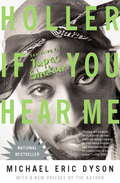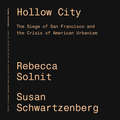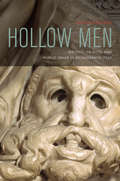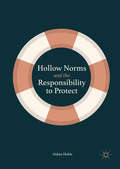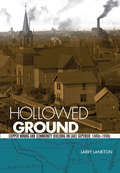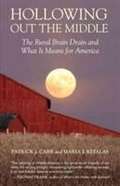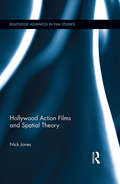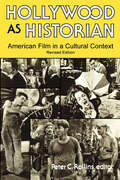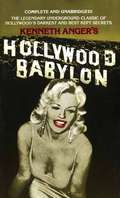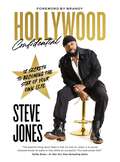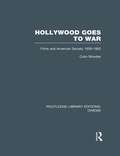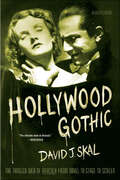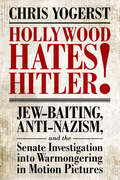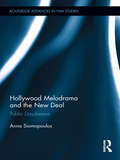- Table View
- List View
Holler If You Hear Me: Searching for Tupac Shakur
by Michael Eric DysonAcclaimed for his writing on Malcolm X and Martin Luther King, Jr. , as well as his passionate defense of black youth culture, Michael Eric Dyson is known as the "hip-hop intellectual. " With his Blackboard best seller Holler If You Hear Me, Dyson has reached his widest audience to date, bringing to life the hopes and dreams of slain hip-hop artist Tupac Shakur. Viewed by many as a "black James Dean," Tupac has attained cult status since his death six years ago, partly due to the posthumous release of several albums, three movies, and a collection of poetry. But Tupac lives on primarily because of the devotion of his loyal followers. Dyson helps us to understand why a twenty-five-year-old rapper, activist, poet, actor, and alleged sex offender looms even larger in death than he did in life. With his trademark skills of critical thinking and storytelling, Dyson examines the significance of Tupac Shakur for black youth, assessing the ways in which different elements of Shakur's persona-thug, confused prophet, fatherless child-are both vital and destructive. Deeply personal and sharply analytical at the same time, Dyson's book offers a wholly original way of looking at Tupac Shakur that will thrill those who already love the artist and enlighten those who want to understand him.
Hollow City: The Siege of San Francisco and the Crisis of American Urbanism (Haymarket Ser.)
by Rebecca SolnitReporting from the front lines of gentrification in San Francisco, Rebecca Solnit and Susan Schwartzenberg sound a warning bell to all urban residents. Wealth is just as capable of ravaging cities as poverty.
Hollow Justice
by David E. WilkinsThis book, the first of its kind, comprehensively explores Native American claims against the United States government over the past two centuries. Despite the federal government’s multiple attempts to redress indigenous claims, a close examination reveals that even when compensatory programs were instituted, Native peoples never attained a genuine sense of justice. David E. Wilkins addresses the important question of what one nation owes another when the balance of rights, resources, and responsibilities have been negotiated through treaties. How does the United States assure that guarantees made to tribal nations, whether through a century old treaty or a modern day compact, remain viable and lasting?
Hollow Men: Writing, Objects, and Public Image in Renaissance Italy
by Susan GaylardThis book relates developments in the visual arts and printing to humanist theories of literary and bodily imitation, bringing together fifteenth- and sixteenth-century frescoes, statues, coins, letters, dialogues, epic poems, personal emblems, and printed collections of portraits. Its interdisciplinary analyses show that Renaissance theories of emulating classical heroes generated a deep skepticism about self-presentation, ultimately contributing to a new awareness of representation as representation.Hollow Men shows that the Renaissance questioning of “interiority” derived from a visual ideal, the monument that was the basis of teachings about imitation. In fact, the decline of exemplary pedagogy and the emergence of modern masculine subjectivity were well underway in the mid–fifteenth century, and these changes were hastened by the rapid development of the printed image.
Hollow Norms and the Responsibility to Protect
by Aidan HehirThis book explains why there is a pronounced disjuncture between R2P's habitual invocation and its actual influence, and why it will not make the transformative progress its proponents claim. Rather than disputing that R2P is a norm, or declaring that norms are insignificant, Hehir engages with post-positivist constructivist accounts on the role of norms to demonstrate first, that the efficacy of a norm is not directly related to the extent to which it is proliferated or invoked, and second, that in the post-institutionalization phase, norms undergo both contestation and (potentially regressive) reinterpretation. This volume analyses the evolution of R2P, and demonstrates that it has been steadily circumscribed and co-opted, so that today it has no power to meaningfully influence the behaviour of states. It is essential reading for academic audiences in the disciplines of International Relations and International Law.
Hollowed Ground: Copper Mining and Community Building on Lake Superior, 1840s-1990s
by Larry LanktonDetails a century and a half of copper mining along Upper Michigan's Keweenaw Peninsula, from the arrival of the first incorporated mines in the 1840s until the closing of the last mine in the mid-1990s.
Hollowed Out: A Warning about America's Next Generation
by Jeremy S. AdamsDo teachers have a front row seat to America&’s decline? Jeremy S. Adams, a teacher at both the high school and college levels, thinks so. Adams has spent decades trying to instill wisdom, ambition, and a love of learning in his students. And yet, as he notes, when teachers get together, they often share an arresting conclusion: Something has gone terribly wrong. Something essential is missing in our young people. Their curiosity seems stunted, their reason undeveloped, their values uninformed, their knowledge lacking, and most worrying of all, their humanity diminished. Digital hermits of a sort unfamiliar to an older generation, they have little interest in marriage and family. They largely dismiss—and are shockingly ignorant of—religion. They sneer at patriotism, sympathize with riots and vandalism, and regard American society and civilization as so radically flawed that it must be dismantled. Often friendless and depressed, they eat alone, study alone, and even &“socialize&” alone. Educators like Adams see a generation slipping away. The problems that have hollowed out our young people have been festering for years. A year of COVID-19 lockdowns and social distancing have magnified them. The result could be a generation—and our nation&’s future—lost in a miasma of alienation and stupefaction. In his stunning new book, Hollowed Out, Jeremy S. Adams reveals why students have rejected the wisdom, culture, and institutions of Western civilization—and what we can do to win them back. Poignant, frightening, and yet inspiring, this is a book for every parent, teacher, and patriot concerned for our young people and our country
Hollowing Out the Middle
by Patrick J. Carr Maria J. KefalasIn 2001, with funding from the MacArthur Foundation, sociologists Patrick J. Carr and Maria J. Kefalas moved to Iowa to understand the rural brain drain and the exodus of young people from America's countryside. They met and followed working-class "stayers"; ambitious and college-bound "achievers"; "seekers," who head off to war to see what the world beyond offers; and "returners," who eventually circle back to their hometowns. What surprised them most was that adults in the community were playing a pivotal part in the town's decline by pushing the best and brightest young people to leave. In a timely, new afterword, Carr and Kefalas address the question "so what can be done to save our communities?" They profile the efforts of dedicated community leaders actively resisting the hollowing out of Middle America. These individuals have creatively engaged small town youth-stayers and returners, seekers and achievers-and have implemented a variety of programs to combat the rural brain drain. These stories of civic engagement will certainly inspire and encourage readers struggling to defend their communities. From the Trade Paperback edition.
Hollywood Action Films and Spatial Theory (Routledge Advances in Film Studies)
by Nick JonesThis book applies the discourse of the so-called ‘spatial turn’ to popular contemporary cinema, in particular the action sequences of twenty-first century Hollywood productions. Tackling a variety of spatial imaginations (contemporary iconic architecture; globalisation and non-places; phenomenological knowledge of place; consumerist spaces of commodity purchase; cyberspace), the diverse case studies not only detail the range of ways in which action sequences represent the challenge of surviving and acting in contemporary space, but also reveal the consistent qualities of spatial appropriation and spatial manipulation that define the form. Jones argues that action sequences dramatise the restrictions and possibilities of space, offering examples of radical spatial praxis through their depictions of spatial engagement, struggle and eventual transcendence.
Hollywood As Historian: American Film in a Cultural Context
by Peter C. Rollins“A commendably comprehensive analysis of the issue of Hollywood’s ability to shape our minds . . . invigorating reading.” ?BooklistFilm has exerted a pervasive influence on the American mind, and in eras of economic instability and international conflict, the industry has not hesitated to use motion pictures for propaganda purposes. During less troubled times, citizens’ ability to deal with political and social issues may be enhanced or thwarted by images absorbed in theaters. Tracking the interaction of Americans with important movie productions, this book considers such topics as racial and sexual stereotyping; censorship of films; comedy as a tool for social criticism; the influence of “great men” and their screen images; and the use of film to interpret history. Hollywood As Historian benefits from a variety of approaches. Literary and historical influences are carefully related to The Birth of a Nation and Apocalypse Now, two highly tendentious epics of war and cultural change. How political beliefs of filmmakers affected cinematic styles is illuminated in a short survey of documentary films made during the Great Depression. Historical distance has helped analysts decode messages unintended by filmmakers in the study of The Snake Pit and Dr. Strangelove. Hollywood As Historian offers a versatile, thought-provoking text for students of popular culture, American studies, film history, or film as history. Films considered include: The Birth of a Nation (1915), The Plow that Broke the Plains (1936), The River (1937), March of Time (1935-1953), City Lights (1931), Modern Times (1936), The Great Dictator (1940), The Grapes of Wrath (1940), Native Land (1942), Wilson (1944), The Negro Soldier (1944), The Snake Pit (1948), On the Waterfront (1954), Dr. Strangelove (1964), Who’s Afraid of Virginia Woolf? (1966), and Apocalypse Now (1979).“Recommended reading for anyone concerned with the influence of popular culture on the public perception of history.” ?American Journalism
Hollywood Babylon: The Legendary Underground Classic of Hollywood's Darkest and Best Kept Secrets
by Kenneth AngerWHITE ELEPHANTS--the God of Hollywood wanted white elephants, and white elephants he got--eight of 'em, plaster mammoths perched on mega-mushroom pedestals, lording it over the colossal court of Belshazzar, the pasteboard Babylon built beside the dusty tin-lizzie trail called Sunset Boulevard.
Hollywood Black: The Stars, the Films, the Filmmakers (Turner Classic Movies)
by Donald BogleThe films, the stars, the filmmakers-all get their due in Hollywood Black, a sweeping overview of blacks in film from the silent era through Black Panther, with striking photos and an engrossing history by award-winning author Donald Bogle.The story opens in the silent film era, when white actors in blackface often played black characters, but also saw the rise of independent African American filmmakers, including the remarkable Oscar Micheaux. It follows the changes in the film industry with the arrival of sound motion pictures and the Great Depression, when black performers such as Stepin Fetchit and Bill "Bojangles" Robinson began finding a place in Hollywood. More often than not, they were saddled with rigidly stereotyped roles, but some gifted performers, most notably Hattie McDaniel in Gone With the Wind (1939), were able to turn in significant performances.In the coming decades, more black talents would light up the screen. Dorothy Dandridge became the first African American to earn a Best Actress Oscar nomination for Carmen Jones (1954), and Sidney Poitier broke ground in films like The Defiant Ones and 1963's Lilies of the Field. Hollywood Black reveals the changes in images that came about with the evolving social and political atmosphere of the US, from the Civil Rights era to the Black Power movement. The story takes readers through Blaxploitation, with movies like Shaft and Super Fly, to the emergence of such stars as Cicely Tyson, Richard Pryor, Eddie Murphy, and Whoopi Goldberg, and of directors Spike Lee and John Singleton.The history comes into the new millennium with filmmakers Barry Jenkins (Moonlight), Ava Du Vernay (Selma), and Ryan Coogler (Black Panther); megastars such as Denzel Washington, Will Smith, and Morgan Freeman; as well as Halle Berry, Angela Bassett, Viola Davis, and a glorious gallery of others.Filled with evocative photographs and stories of stars and filmmakers on set and off, Hollywood Black tells an underappreciated history as it's never before been told.
Hollywood Blockbusters: The Anthropology of Popular Movies
by Peter Wogan David SuttonCertain Hollywood movies are now so deeply woven into the cultural fabric that lines of their dialogue - for example, 'Make him an offer he can't refuse' - have been incorporated into everyday discourse. The films explored in this book, which include The Godfather, Jaws, The Big Lebowski, Field of Dreams and The Village, have become important cultural myths, fascinating windows into the schisms, tensions, and problems of American culture. Hollywood Blockbusters: The Anthropology of Popular Movies uses anthropology to understand why these movies have such enduring appeal in this age of fragmented audiences and ever-faster spin cycles. Exploring key anthropological issues from ritual, kinship, gift giving and totemism to literacy, stereotypes, boundaries and warfare, this fascinating book uncovers new insights into the significance of modern film classics for students of Film, Media, Anthropology and American Cultural Studies.
Hollywood Confidential: 12 Secrets to Becoming the Star of Your Own Life
by Steve JonesHow long will you wait to live your dreams? Maybe you're just starting out and are unsure where to invest your time and energy. Maybe you've started and stopped so much already that your fallback plan has become the only plan. Maybe you've simply lost touch with your creative self. In Hollywood Confidential, Steve Jones shares his twelve secrets to success accrued from working alongside some of today's most powerful voices in entertainment.Known for production successes such as Jennifer Lopez's first holiday visual and the Oprah Winfrey Network's record-breaking #1 docuseries Black Love, Steve knows the endurance and optimism it takes to pursue your passion. In Hollywood Confidential, he dishes out inspiration from his two-decade L.A. career and what he has learned from the megastars he's worked with and admired. Inside you'll find:Practical suggestions for silencing your inner critic, making the most of failures, and giving yourself permission to shineMotivating ideas to help you live out your purpose, extracted from the case studies and success stories of twelve of Hollywood&’s top actors and personalities that Steve has produced in TV/Media, or interviewed on his platform including Issa Rae, Tabitha Brown, Regina King, Angela Bassett, and moreAffirmations to keep you going as you cast a vision for who you want to becomeThought-provoking questions for reflection at the end of every chapterStrategies for anyone dreaming of moving out of the shadows, into the spotlight and leading role of their life Full of unforgettable wisdom and powerful perspective from industry leaders, Hollywood Confidential is the perfect gift for:Those who are looking to discover their purpose in lifeEveryone who has a dream to live their best, most authentic lifeThe self-made creative looking to make their mark on the worldAnyone eager to break into the entertainment or music industriesFans of Steve Jones&’s popular event series Hollywood ConfidentialReaders who enjoy anecdotes and advice from today's industry leaders It's time to take your place at the center of your life's stage. Hollywood Confidential is the jolt of encouragement you need to embrace your creative self, your biggest dreams, and your innate desire to live a fulfilled, satisfying life.
Hollywood Diplomacy: Film Regulation, Foreign Relations, and East Asian Representations
by Hye Seung ChungHollywood Diplomacy contends that, rather than simply reflect the West’s cultural fantasies of an imagined “Orient,” images of Chinese, Japanese, and Korean ethnicities have long been contested sites where the commercial interests of Hollywood studios and the political mandates of U.S. foreign policy collide, compete against one another, and often become compromised in the process. While tracing both Hollywood’s internal foreign relations protocols—from the “Open Door” policy of the silent era to the “National Feelings” provision of the Production Code—and external regulatory interventions by the Chinese government, the U.S. State Department, the Office of War Information, and the Department of Defense, Hye Seung Chung reevaluates such American classics as Shanghai Express and The Great Dictator and applies historical insights to the controversies surrounding contemporary productions including Die Another Day and The Interview. This richly detailed book redefines the concept of “creative freedom” in the context of commerce: shifting focus away from the artistic entitlement to offend foreign audiences toward the opportunity to build new, better relationships with partners around the world through diplomatic representations of race, ethnicity, and nationality.
Hollywood Fantasies of Miscegenation: Spectacular Narratives of Gender and Race
by Susan CourtneyHollywood Fantasies of Miscegenation analyzes white fantasies of interracial desire in the history of popular American film. From the first interracial screen kiss of 1903, through the Production Code's nearly thirty-year ban on depictions of "miscegenation," to the contemplation of mixed marriage in Guess Who's Coming to Dinner (1967), this book demonstrates a long, popular, yet underexamined record of cultural fantasy at the movies. With ambitious new readings of well-known films like D.W. Griffith's 1915 epic The Birth of a Nation and of key forgotten films and censorship documents, Susan Courtney argues that dominant fantasies of miscegenation have had a profound impact on the form and content of American cinema. What does it mean, Courtney asks, that the image of the black rapist became a virtual cliché, while the sexual exploitation of black women by white men under slavery was perpetually repressed? What has this popular film legacy invited spectators to remember and forget? How has it shaped our conceptions of, and relationships to, race and gender? Richly illustrated with more than 140 images, Hollywood Fantasies of Miscegenation carefully attends to cinematic detail, revising theories of identity and spectatorship as it expands critical histories of race, sex, and film. Courtney's new research on the Production Code's miscegenation clause also makes an important contribution, inviting us to consider how that clause was routinely interpreted and applied, and with what effects.
Hollywood Goes Oriental: CaucAsian Performance in American Film
by Tom Gunning Karla Rae FullerAn in-depth look at the portrayal of Asian characters by non-Asian actors in classical Hollywood film.
Hollywood Goes to War: Films and American Society, 1939-1952 (Routledge Library Editions: Cinema)
by Colin ShindlerA historian’s view of the relationship between American history and the American film industry, this book is a witty and perceptive account of Hollywood and its films in the years from the outbreak of the Second World War in Europe to the end of the war in Korea, It describes how film makers and their industry were shaped by and responded to the strong political and social stimuli of wartime America. The author examines the recurring question of whether the movies were a reflection of the society in which they were produced, or whether by virtue of their undeniable propaganda power the films shaped that society. Combining evidence from literary, visual and oral sources, he covers a wide range of movies, emphasising in particular Casablanca, Mrs Miniver, The Best Years of Our Lives and Since You Went Away. In addition to placing the films in a social and political context, the author shows that Hollywood is a perfect example of the bone-headed way in which people behave when they are dealing with large amounts of money and power. Enjoyably nostalgic, this book will appeal to film enthusiasts as well as those interested in war and its effect on society.
Hollywood Gothic: The Tangled Web of Dracula from Novel to Stage to Screen
by David J. SkalA fully updated edition of David J. Skal's Hollywood Gothic, "The ultimate book on Dracula" (Newsweek).The primal image of the black-caped vampire Dracula has become an indelible fixture of the modern imagination. It's recognition factor rivals, in its own perverse way, the familiarity of Santa Claus. Most of us can recite without prompting the salient characteristics of the vampire: sleeping by day in its coffin, rising at dusk to feed on the blood of the living; the ability to shapeshift into a bat, wolf, or mist; a mortal vulnerability to a wooden stake through the heart or a shaft of sunlight. In this critically acclaimed excursion through the life of a cultural icon, David J. Skal maps out the archetypal vampire's relentless trajectory from Victorian literary oddity to movie idol to cultural commodity, digging through the populist veneer to reveal what the prince of darkness says about us all.includes black-and-white Illustrations throughout, plus a new Introduction.
Hollywood Hates Hitler!: Jew-Baiting, Anti-Nazism, and the Senate Investigation into Warmongering in Motion Pictures
by Chris YogerstIn September 1941, a handful of isolationist senators set out to tarnish Hollywood for warmongering. The United States was largely divided on the possibility of entering the European War, yet the immigrant moguls in Hollywood were acutely aware of the conditions in Europe. After Kristallnacht (the Night of Broken Glass), the gloves came off. Warner Bros. released the first directly anti-Nazi film in 1939 with Confessions of a Nazi Spy. Other studios followed with such films as The Mortal Storm (MGM), Man Hunt (Fox), The Man I Married (Fox), and The Great Dictator (United Artists). While these films represented a small percentage of Hollywood’s output, senators took aim at the Jews in Hollywood who were supposedly “agitating us for war” and launched an investigation that resulted in Senate Resolution 152. The resolution was aimed at both radio and movies that “have been extensively used for propaganda purposes designed to influence the public mind in the direction of participation in the European War.” When the Senate approved a subcommittee to investigate the intentions of these films, studio bosses were ready and willing to stand up against the government to defend their beloved industry. What followed was a complete embarrassment of the United States Senate and a large victory for Hollywood as well as freedom of speech. Many works of American film history only skim the surface of the 1941 investigation of Hollywood. In Hollywood Hates Hitler! Jew-Baiting, Anti-Nazism, and the Senate Investigation into Warmongering in Motion Pictures, author Chris Yogerst examines the years leading up to and through the Senate Investigation into Motion Picture War Propaganda, detailing the isolationist senators’ relationship with the America First movement. Through his use of primary documents and lengthy congressional records, Yogerst paints a picture of the investigation’s daily events both on Capitol Hill and in the national press.
Hollywood High: A Totally Epic, Way Opinionated History of Teen Movies
by Bruce HandyFrom a longtime Vanity Fair writer and editor, a delightfully entertaining, intelligent, and illuminating history and tribute to teen movies—from Rebel Without a Cause to Fast Times at Ridgemont High, and on to John Hughes, Mean Girls, The Hunger Games, and more.What influence did Francis Ford Coppola have on George Lucas&’s American Graffiti? And Lucas on John Singleton&’s Boyz n the Hood? How does teenage sexuality in Fast Times at Ridgemont High compare to Twilight? Which teen movies pass the Bechdel test? Why is Mean Girls actually the last great teen film of the 20th century? In the same way that Peter Biskind&’s Easy Riders, Raging Bulls connects the films of the 1970s to the period&’s cultural upheaval, and David Hadju&’s Positively 4th Street tells the story of the sixties through the emergence of folk music, Bruce Handy&’s Hollywood High situates iconic teen movies within their times and reveals the intriguing stories, artists, and passions behind their creation. These films aren&’t merely beloved stories; they reflect teens&’ growing economic and cultural influence, societal panics, and shifting perceptions of youth in America. Much more than a nostalgia trip, Hollywood High is a lively, provocative, and affectionate cultural history, spanning nearly one hundred years. Handy, an acclaimed journalist and critic who spent two decades at Vanity Fair, examines the defining films of each generation and builds connections between them. From the Andy Hardy classics (1937–1946) to the iconic Rebel Without a Cause (1955); Beach Party series (1963–1968); American Graffiti (1973); Fast Times at Ridgemont High (1982); the John Hughes touchstones Sixteen Candles, The Breakfast Club, Pretty in Pink, and Ferris Bueller&’s Day Off (1984–1986); Boyz N the Hood (1991); Mean Girls (2004); the Twilight saga (2008–2012); and The Hunger Games series (2012–2015); this is a captivating deep dive into the world of teen movies that captures their sweeping history and influence. We&’ll hear from icons James Dean, Annette Funicello, George Lucas, Amy Heckerling, John Hughes, Molly Ringwald, John Singleton, Tina Fey, and Kristen Stewart, and discover why the most timeless teen movies resonate across generations.
Hollywood Melodrama and the New Deal: Public Daydreams (Routledge Advances in Film Studies)
by Anna SiomopoulosWhile many critics have analyzed the influence of the FDR administration on Hollywood films of the era, most of these studies have focused either on New Deal imagery or on studio interactions with the federal government. Neither type of study explores the relationship between film and the ideological principles underlying the New Deal. This book argues that the most important connections between the New Deal and Hollywood melodrama lie neither in the New Deal iconography of these films, nor in the politics of any one studio executive. Rather, the New Deal figures prominently in Hollywood melodramas of the Depression era because these films engage the political ideas underlying welfare state policies—ideas that extended the reach of government into the private realm. As the author shows, Hollywood melodramas interrogated New Deal principles of liberal empathy—consumer citizenship, the refeudalization of the state, and minimal economic redistribution—only to support welfare-state ideology in the end.
Hollywood Musicals (Routledge Film Guidebooks)
by Steven CohanHollywood Musicals offers an insightful account of a genre that was once a mainstay of twentieth-century film production and continues to draw audiences today. What is a film musical? How do musicals work, formally and culturally? Why have they endured since the introduction of sound in the late 1920s? What makes them more than glittery surfaces or escapist fare? In answering such questions, this guidebook by Steven Cohan takes new and familiar viewers on a tour of Hollywood musicals. Chapters discuss definitions of the genre, its long history, different modes of analyzing it, the great stars of the classic era, and auteur directors. Highlights include extended discussions of such celebrated musicals from the studio era as The Love Parade, Top Hat, Holiday Inn, Stormy Weather, The Gang’s All Here, Meet Me in St. Louis, Cover Girl, Mother Wore Tights, Singin’ in the Rain, Gentlemen Prefer Blondes, The Band Wagon, Seven Brides for Seven Brothers, and Jailhouse Rock as well as later films such as Cabaret, All that Jazz, Beauty and the Beast, and La La Land. Cohan brings in numerous other examples that amplify and extend to the present day his claims about the musical, its generic coherence and flexibility, its long and distinguished history, its special appeal, and its cultural significance. Clear and accessible, this guide provides students of film and culture with a succinct but substantial overview that provides both analysis and intersectional context to one of Hollywood’s most beloved genres.
Hollywood Nation
by James HirsenFrom the bestselling author ofTales from the Left Coast. Now entering Hollywood Nation, where fact blurs with fiction, virtue with vice Now more than ever, stars like Michael Moore, Sean Penn, and Susan Sarandon are acting as self-appointed celebrity pundits, blurring the lines between entertainment and news to force their views onto the rest of the country. With their politically charged films, distorted documentaries, and skewed docudramas, they’re trying to set the agenda with little regard for the truth. Even worse, many so-called journalists are doing the same thing, dangerously mixing information and entertainment in an attempt to ratchet up ratings—and to inject their own views into the news. InHollywood Nation,New York Timesbestselling author and media critic James Hirsen reveals how the New Media are leading the counterattack against the relentless liberal assault from East Coast newsrooms and Left Coast studios. Through his extensive research and exclusive interviews with news and entertainment iconoclasts—including Bill O’Reilly, Mel Gibson, and Ann Coulter—Hirsen shows how liberals are losing their stranglehold on political and cultural debates. With a new chapter full of news about the ongoing Hollywoodization of America, Hirsen’s smart and compellingHollywood Nationgives us ammunition for the battle to reclaim our country and our culture.
Hollywood Planet: Global Media and the Competitive Advantage of Narrative Transparency (Routledge Communication Series)
by Scott Robert OlsonThe popularity of American television programs and feature films in the international marketplace is widely recognized but scarcely understood. Existing studies have not sufficiently explained the global power of the American media nor its actual effects. In this volume, Scott Robert Olson tackles the issue head on, establishing his thesis that the United States' competitive advantage in the creation and global distribution of popular taste is due to a unique mix of cultural conditions that are conducive to the creation of "transparent" texts--narratives whose inherent polysemy encourage diverse populations to read them as though they are indigenous. Olson posits that these narratives have meaning to so many different cultures because they allow viewers in those cultures to project their own values, archetypes, and tropes into the movie or television program in a way that texts imported from other cultures do not, thus enabling the import to function as though it were an indigenous product. As an innovative volume combining postcolonial and postmodern theory with global management strategic theory, Hollywood Planet is one of the first studies that attempts to account theoretically for numerous recent ethnographic studies that suggest different interpretations of television programs and film by a variety of international audiences. Relevant to studies in media theory and other areas of the communication discipline, as well as anthropology, sociology, and related fields, Hollywood Planet contains a powerful and original argument to explain the dominance of American media in the global entertainment market.
